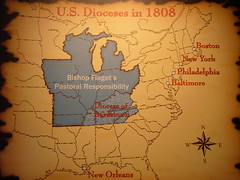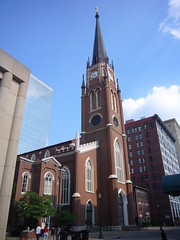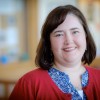This article is more than 5 years old.
Friday at the ATLA Annual Conference began with the second plenary speaker, Dr. Susan Garrett, Professor of New Testament at Louisville Presbyterian Theological Seminary. She discussed, “Biblical Studies and Real World Hermeneutics,” which advocated a shift from “integral hermeneutics” to “differential hermeneutics.” Hermeneutics, in biblical studies, is the field of interpretation of biblical and extra-biblical texts. Garrett encourages teaching students to understand the variety of possible interpretations and approaches to a given text, rather than teaching them that there is one correct interpretation. This idea of a single, “authorized” meaning leads to division, because there is an implied right and wrong interpretation. Rather, by teaching our students that there are multiple possibilities, we prepare them for interactions in congregations and the “real world” where they will be leading or encountering a variety of viewpoints. She discussed several assignments that she uses with students to help them think through an interpretation and its implications, and emphasized that the goal isn’t to change student’s minds, but get them to be aware of the multiple choices they make as they do interpretation. I thought her talk was fascinating, and she used some really good examples to illustrate her points. Let me know if you are interested in more specifics!
“Online Bibles: Trustworthy, Sectarian and Odd Bibles” by Michael Kuykendall, Professor of New Testament Studies at Golden Gate Baptist Theological Seminary, was a very useful overview of the variety of online bibles that are available for study or historical research. He included a 20 page annotated handout with his show-and-tell presentation, which will help me add to my LibGuide for the Divinity School! This presentation was a great reminder of the variety of translations that are available (literal, paraphrases, functional, dynamic), and how they can be useful for research (tracing mistakes, publication/publisher histories, religious conflicts).
After a lunch presentation from EBSCO, I headed to a presentation by Anthony Elia from JKM Library at the Lutheran School of Theology in Chicago, “Reading as Wandering, Wandering as Theology: Textual Landscapes, Flaneury and the Social History of Contemporary Reading.” This was a dense paper filled with some great quotations and statistics on reading and how it has been perceived over the last two hundred years. Specifically, Elia discussed the long history of the idea of the “death of reading” and how morality and concepts of laziness and leisure are bound up in our discussions of reading and why we do it. One question he posed had the audience reflecting: How long can you go without reading? One week? One day? One hour? How does thinking about reading in this way broaden what we consider to be reading?
A panel discussion from the Teaching and Learning Interest Group, “Pray, Work, Study, Log On: Can Libraries be a Common Ground in Online Theological Education?” focused on online education and creating community through the course design. While each of the panelists had led a different type of online course, all five presenters emphasized that online courses are not less work than a face-to-face class, and to have a good experience for both teacher and students, the course should not enroll more than 15-20 students. In designing an online course, or an online component for a “regular” course, it is important to not just transfer your regular content to the online environment, ie, don’t tape your lecture and post it. A variety of organized assignments, discussion questions, collaboration and social media spaces, etc… need to be incorporated into the online course.
After a short break, I headed a few blocks from the hotel for a tour of the History Center for the Archdiocese of Louisville and the Cathedral of the Assumption. The Diocese of Louisville was created in 1808 (along with Boston, New York and Philadelphia) and was the diocese for “The West,” encompassing all or part of Tennessee, Kentucky, Arkansas, Missouri, Iowa, Wisconsin, Michigan, Illinois, Indiana and Ohio. The history center had a variety of pictures, vestments and other artifacts from the first bishop, Bishop Flaget, through to the contemporary church.




2 Comments on ‘ATLA2010-Day Two’
Love the pictures!
I, too, love the pictures!